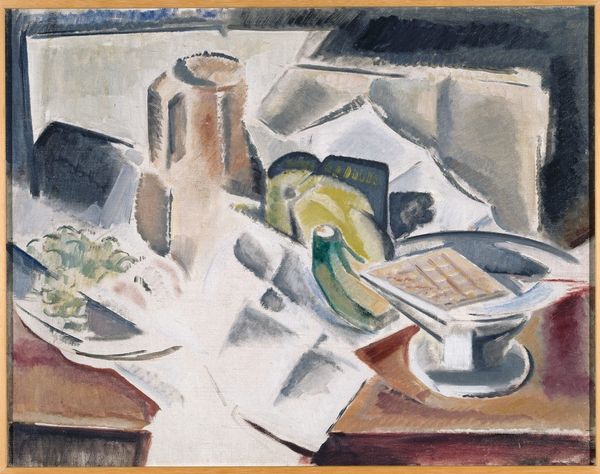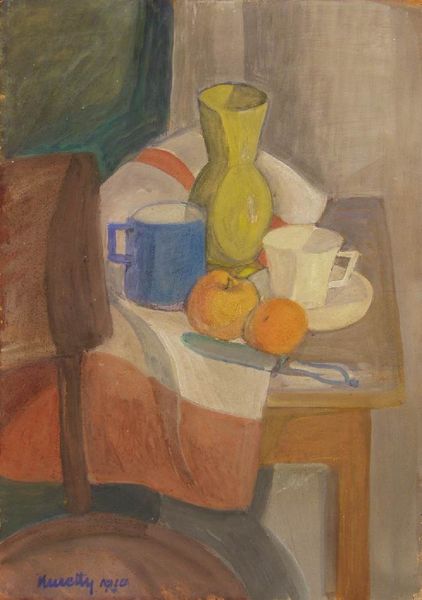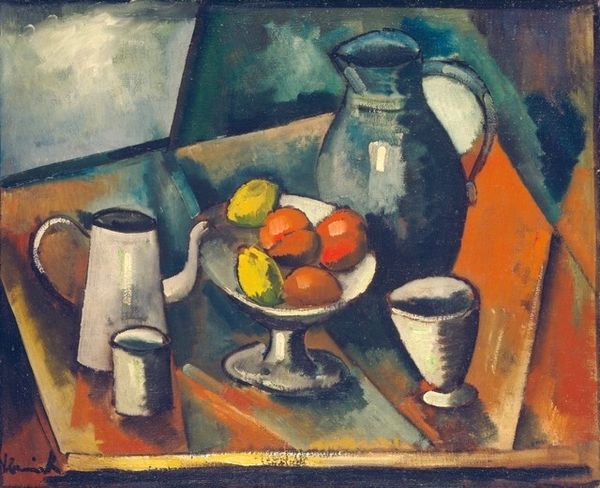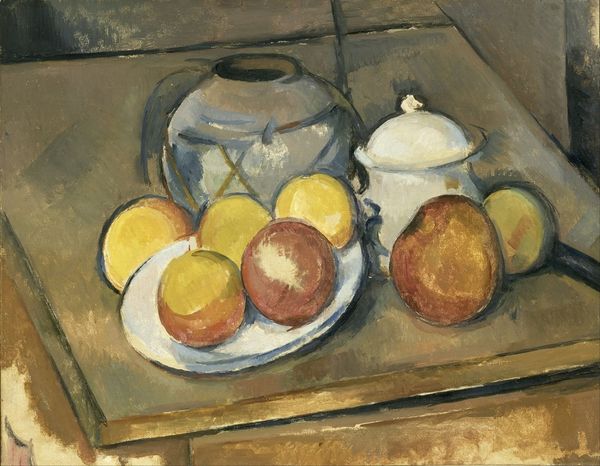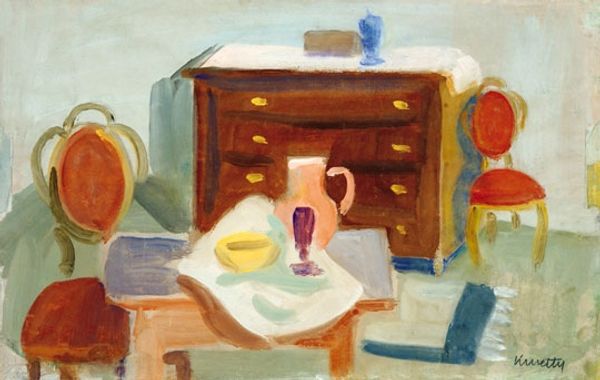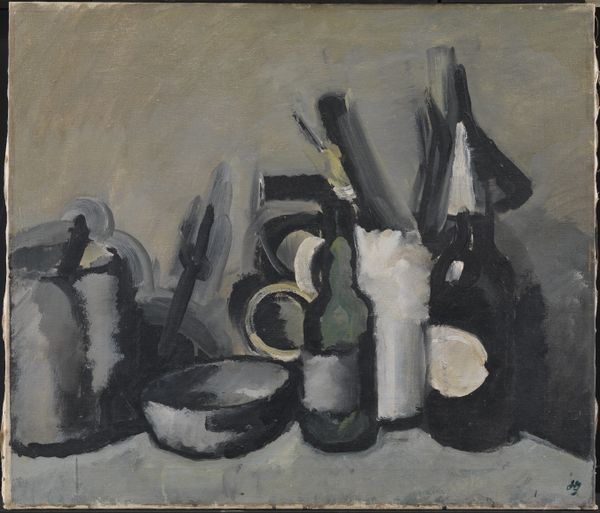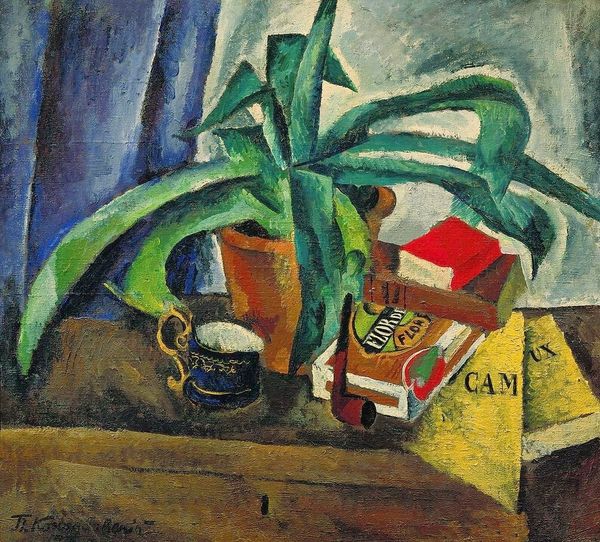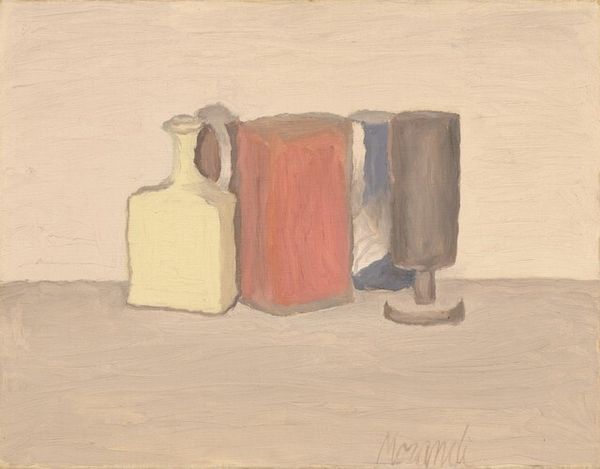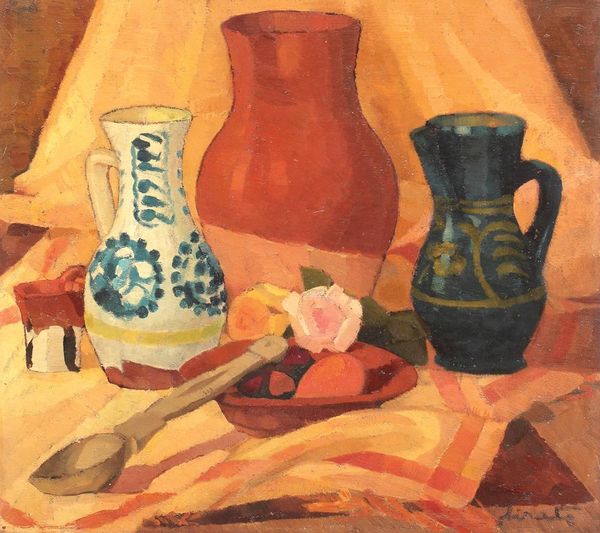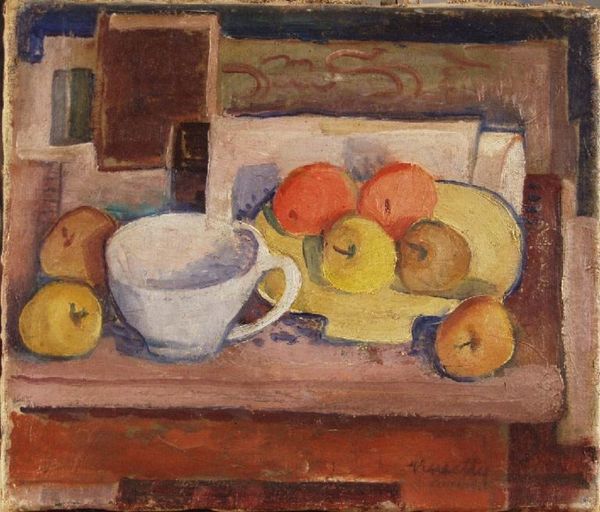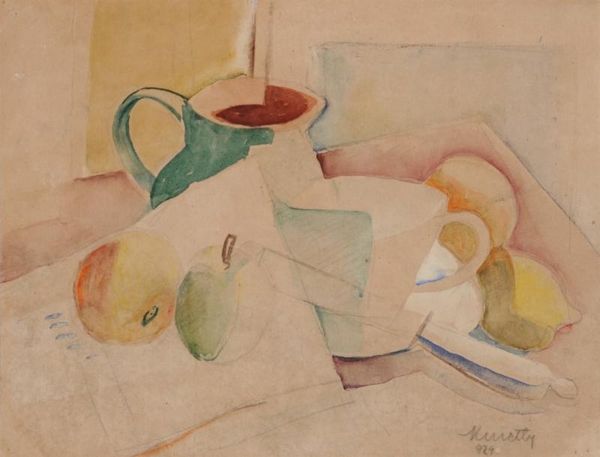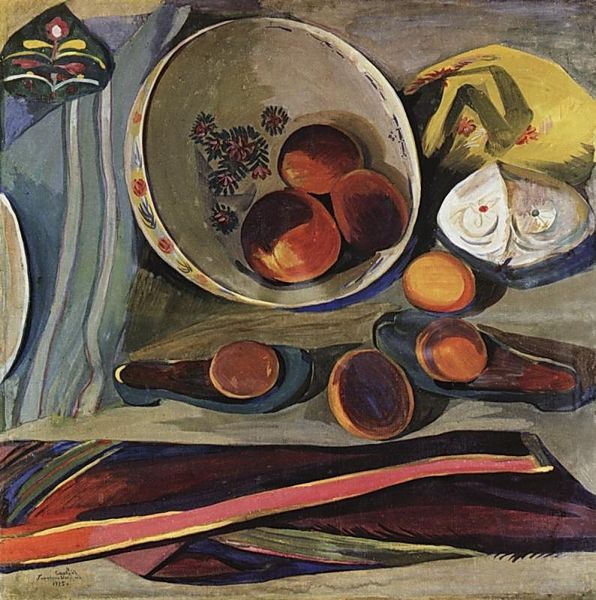
print, paper, photography, watercolor
#
still-life
#
cubism
# print
#
paper
#
photography
#
oil painting
#
watercolor
#
geometric
#
abstraction
#
watercolour illustration
#
modernism
Dimensions: 27.5 x 22.5 cm
Copyright: Public domain US
Curator: At first glance, this artwork exudes a somber yet strangely comforting ambiance through its muted tones and fractured forms. Editor: Today, we’re looking at Pablo Picasso's "Still life with a Glass and an Apple" from 1914. Executed in watercolor, it typifies his exploration of cubism and its fracturing of conventional forms. Curator: Note how Picasso doesn’t just present objects; he deconstructs them. Look closely at the interplay between the apple, the glass, and the book— each facet catching the light from multiple angles simultaneously. It challenges our perception, demanding active engagement with its reconstruction. Editor: And consider the socio-historical context! By 1914, Picasso had spent nearly a decade dismantling traditional painting conventions and challenging consumer culture and bourgeoisie aesthetics. This artwork may appear unassuming, but is actually pushing the boundaries of how everyday objects were represented and perceived at the time. Curator: Precisely. The use of watercolour, traditionally associated with sketches and preliminary studies, signals an important shift. Watercolor became an important medium for more developed work. It asks us to consider what truly constitutes 'high art' as such boundaries become blurrier in modernist praxis. Editor: The restrained palette certainly amplifies the intellectual exercise rather than an emotional engagement. It compels the viewer to participate in its geometric dance; we have to piece together its logic, as its surface both reveals and conceals. Curator: I see what you mean, but the simplicity of these ordinary objects — the glass, the apple, the book — it is that ordinariness, elevated through cubist representation, that really draws my interest and opens up possibilities for engagement. Its labor exists between intention, execution, and viewership. Editor: The artist plays with texture through brushstrokes, manipulating surface qualities which challenge illusionism and invite reflection on its material construction as an object. Curator: Indeed. Thinking about how seemingly insignificant pieces from mass production contribute to shaping culture at the beginning of WWI allows new interpretive potential. Editor: It offers a fascinating study of material engagement and artistic intentions in this pivotal period. Curator: Agreed, understanding those intentions makes engagement richer.
Comments
No comments
Be the first to comment and join the conversation on the ultimate creative platform.
